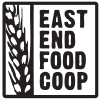National Pollinator Week is June 19-25. It’s a time to celebrate pollinators and spread the word about what you can do to protect them. At the Co-op, we’ll be focusing on the many products brought to us through pollination.
- What do pollinators mean to the food industry?
- Worldwide, approximately 1,000 plants grown for food, beverages, fibers, spices and medicines need to be pollinated by animals in order to produce the resources on which we depend.
- Foods produced with the help of pollinators include apples, strawberries, blueberries, chocolate, melons, peaches, figs, tomatoes, pumpkins, and almonds.
- In the United States, pollination by honey bees and other insects produces nearly $20 billion worth of products annually!
What can you do for pollinators?
- Create a pollinator friendly garden habitat in just a few simple steps.
- Design your garden so that there is a continuous succession of plants flowering from spring through fall. Check for the species or cultivars best suited to your area and gradually replace lawn grass with flower beds.
- Plant native to your region using plants that provide nectar for adults plus food for insect larvae, such as milkweed for monarchs. If you do use non-native plants, choose ones that don’t spread easily, since these could become invasive.
- Select old fashioned varieties of flowers whenever possible because breeding has caused some modern blooms to lose their fragrance and/or the nectar/pollen needed to attract and feed pollinators.
- Install ‘houses’ for bats and native bees. For example, use wood blocks with holes or small open patches of mud. As little as 12” across is sufficient for some bees.
- Avoid pesticides, even so-called “natural” ones such as Bacillus thuringiensis (Bt). If you must use them, use the most selective and least toxic ones and apply them at night when most pollinators aren’t active.
- Supply water for all wildlife. A dripping faucet or a suspended milk carton with a pinhole in the bottom is sufficient for some insects. Other wildlife need a small container of water.
- Provide water for butterflies without letting it become a mosquito breeding area.
- Refill containers daily or bury a shallow plant saucer to its rim in a sunny area, fill it with coarse pine bark or stones and fill to overflowing with water.
- Share fun facts, such as a tiny fly (a “midge”) no bigger than a pinhead is responsible for the world’s supply of chocolate; or one out of every three mouthfuls of food we eat is delivered to us by pollinators.
Reprinted by permission from Pollinator Partnership. Learn more at www.pollinator.org.



Leave A Comment